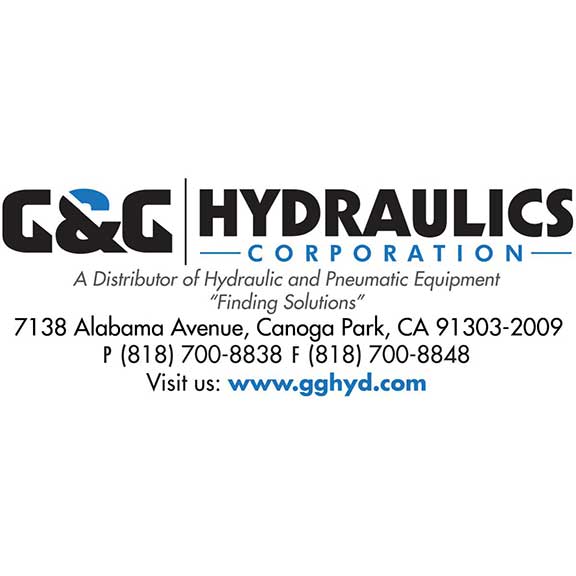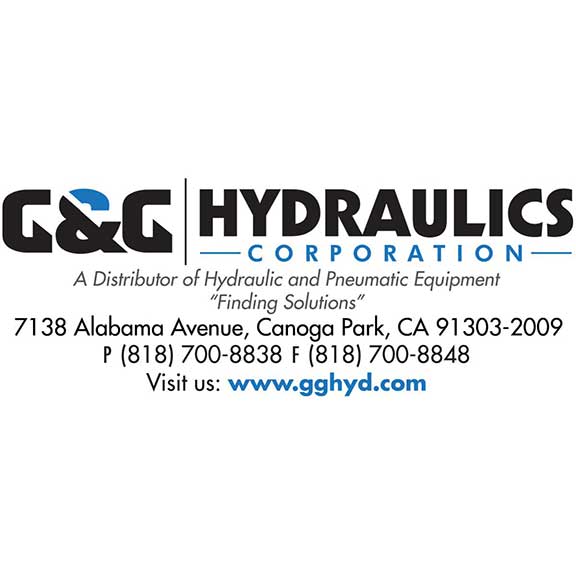Pumps
Pumps
- 10-4000W010 SC Hydraulics Air to Oil Pump, Aluminum/Bronze with Buna SealsSpecial Price $1,064.95 was $1,121.00
- 10-4000W020 SC Hydraulic Engineering Air to Oil Pump with Buna SealsSpecial Price $1,198.80 was $1,262.00
- 10-4000W030 SC Hydraulic Engineering Air operated Pump, Buna N Seals, Aluminum Bronze, 55:1 Pressure RatioSpecial Price $989.90 was $1,042.00
- 10-5000W005 SC Hydraulic Engineering 10-5 Series Air driven Pump, Aluminium Bronze, 10:1 RatioSpecial Price $1,445.90 was $1,522.00
- 10-5000W005L SC Hydraulic Engineering 10-5 Series Air driven Pump, Aluminium Bronze, 10:1 RatioSpecial Price $1,465.85 was $1,543.00
- 10-5000W007 SC Hydraulic Series 10, Air Operated Pump, Buna N Seals, Aluminum Bronze, 12:1 Pressure RatioSpecial Price $1,445.90 was $1,522.00
- 10-5000W010 SC Hydraulic Series 10, Air Operated Pump, Buna N Seals, Aluminum Bronze, 20:1 Pressure RatioSpecial Price $1,445.90 was $1,522.00
- 10-5000W015 SC Hydraulic 10-5 Series Air Operated Pump, Buna N Seals, Aluminum Bronze, 25:1 Pressure RatioSpecial Price $1,399.35 was $1,473.00
- 10-5000W015L SC Hydraulic 10-5 Series Dry Lubricated Air Operated Pump, Buna N Seals, Aluminum Bronze, 25:1 Pressure RatioSpecial Price $1,399.35 was $1,473.00
- 10-5000W018 SC Hydraulic 10-5 Series Air driven Pump, Buna N Seals, Aluminium Bronze, 30:1 RatioSpecial Price $1,399.35 was $1,473.00
- 10-5000W018L SC Hydraulic 10-5 Series Air driven Pump, Buna N Seals, Aluminium Bronze, 30:1 RatioSpecial Price $1,293.90 was $1,362.00
- 10-5000W020 SC Hydraulic 10-5 Series Air driven Pump, Buna N Seals, Aluminium Bronze & Stainless SteelSpecial Price $1,329.05 was $1,399.00
- 10-5000W020L SC Hydraulic 10-5 Series Air driven Pump, Buna N Seals, Aluminum Bronze, 35:1 Pressure RatioSpecial Price $1,329.05 was $1,399.00
-
- 10-5000W030-SAE SC Hydraulic Air Operated Pump, Buna N Seals, Aluminum Bronze, 55:1 Pressure Ratio, SAE ThreadsSpecial Price $1,234.05 was $1,299.00
- 10-5000W030L SC Hydraulics Lubricated Air To Oil Pump, Buna-N Seals, Aluminum Bronze Construction, 55:1 RatioSpecial Price $1,399.35 was $1,473.00
- 10-5000W040 SC Hydraulic 10-5 Series Air driven Pump, Buna N Seals, Aluminium Bronze & Stainless SteelSpecial Price $1,399.35 was $1,473.00
- 10-5000W045 SC Hydraulic 10-5 Series Air driven Pump, Buna N Seals, Aluminium Bronze & Stainless SteelSpecial Price $1,399.35 was $1,473.00
- 10-5000W045L SC Hydraulic 10-5 Series Air driven Pump, Buna N Seals, Aluminium Bronze & Stainless SteelSpecial Price $1,399.35 was $1,473.00
- 10-5000W060 SC Hydraulic 10-5 Series Air driven liquid pump, Buna N Seals, Aluminum Bronze, 105:1 Pressure RatioSpecial Price $1,399.35 was $1,473.00
- 10-5000W060L SC Hydraulic 10-5 Series Lubricated Air driven liquid pump, Buna N Seals, Aluminum Bronze, 105:1 Pressure RatioSpecial Price $1,399.35 was $1,473.00
- 10-5000W160 SC Hydraulic 10-5 Series Air driven Pump, Aluminium Bronze & Stainless SteelSpecial Price $1,445.90 was $1,522.00
- 10-5000W250 SC Hydraulic 10-5 Series Air driven Pump, Aluminium Bronze & Stainless SteelSpecial Price $1,499.10 was $1,578.00
- 10-5000W250L SC Hydraulic Air Operated Pump, Buna N Seals, Aluminum Bronze, 440:1 Pressure Ratio (LUBRICATED)Special Price $1,284.40 was $1,352.00
-
-
- 10-6000S301-HF4 SC Hydraulics "Dry" Lubricated Air To Oil Pump, Buna-N Seals, Stainless Steel Construction, 460:1 RatioSpecial Price $2,669.50 was $2,810.00
- 10-6000S301-HF4-M105 SC Hydraulics Dry Lubricated Air To Oil Pump, APA with 11-6118S000 Outlet Wall Mounting BracketsSpecial Price $2,385.45 was $2,511.00
- 10-6000S402-HF4 SC Hydraulic Air Operated Pump, Buna N Seals, Stainless Steel, 740:1 Pressure Ratio (NON-LUBRICATED)Special Price $2,590.20 was $2,878.00
-
-
-
-
- 10-6000W015L SC Hydraulics Lubricated Air To Oil Pump, Buna-N Seals, Aluminum Bronze And Stainless Steel Construction, 25:1 RatioSpecial Price $1,782.20 was $1,876.00
-
- 10-6000W020L SC Hydraulic 10-6 Series Air Operated Pump, Buna N Seals, Aluminum Bronze, 35:1 Pressure RatioSpecial Price $1,463.00 was $1,540.00
-
- 10-6000W030L SC Hydraulics Lubricated Air to Oil Pump, Buna-N Seals, Aluminum Bronze Construction, 55:1 RatioSpecial Price $1,752.75 was $1,845.00
-
-
-
-
-
-
-
- 10-600BW010L-SAE SC Hydraulic Engineering Pump (20:1) Bronze Bottom Inlet Straight Thread Lubed Style APASpecial Price $1,883.85 was $1,983.00
- 10-600BW030 SC Hydraulics Pump (55:1) Bronze Bottom Inlet Dry Lube APA 10-600-3BSpecial Price $1,591.25 was $1,675.00
- 10-600BW151 SC Hydraulic Pump (240:1) Bronze Bottom Inlet 10-600-15-1BSpecial Price $1,710.95 was $1,801.00
- 10-600KS301L-3/8NPT SC Hydraulic Engineering Pump (460:1) Stainless Steel with DS Air Piston & 3/8" NPT, Outlet Lubed Style APASpecial Price $2,038.70 was $2,146.00
Superior Equipment Hydraulic Pumps
Our superior equipment hydraulic pumps are available in various shapes and sizes and are designed to fit a wide variety of applications. They can easily be deployed on aircraft jacks, trash compactors, clamping devices, torque wrenches, and roller tensioners.
Shop from our different types of pumps:
Order a new pump for your pressure needs or get a replacement hydraulic pump for your equipment and enjoy superior performance, reliability, and durability in the toughest conditions. Explore our selection of hydraulic pumps for sale at our online store.
Designed for Easy Operation
Whether you need a hydraulic pump for your low pressure or high-pressure operations, we have what you need. We’re a certified seller of name brand hydraulic pumps designed to ensure easy operation and provide years of trouble-free operation.
Power your hydraulic systems with ease with our durable and powerful hydraulic pumps. Our pumps match any industrial, aerospace, laundry, pharmaceutical, or agricultural machinery for efficient performance and quick installation.
Shop Now
Order hydraulic pumps at G&G Hydraulics Corporation and enjoy high-quality products, excellent customer service with live chat, and a risk-free guarantee with every product. We’re a company with 700+ 5-star ratings, and we take pride in serving you and ensuring you get the hydraulic supplies you need.
Buy hydraulic pumps for sale now or shop other hydraulic supplies and accessories online.






































Validate your login